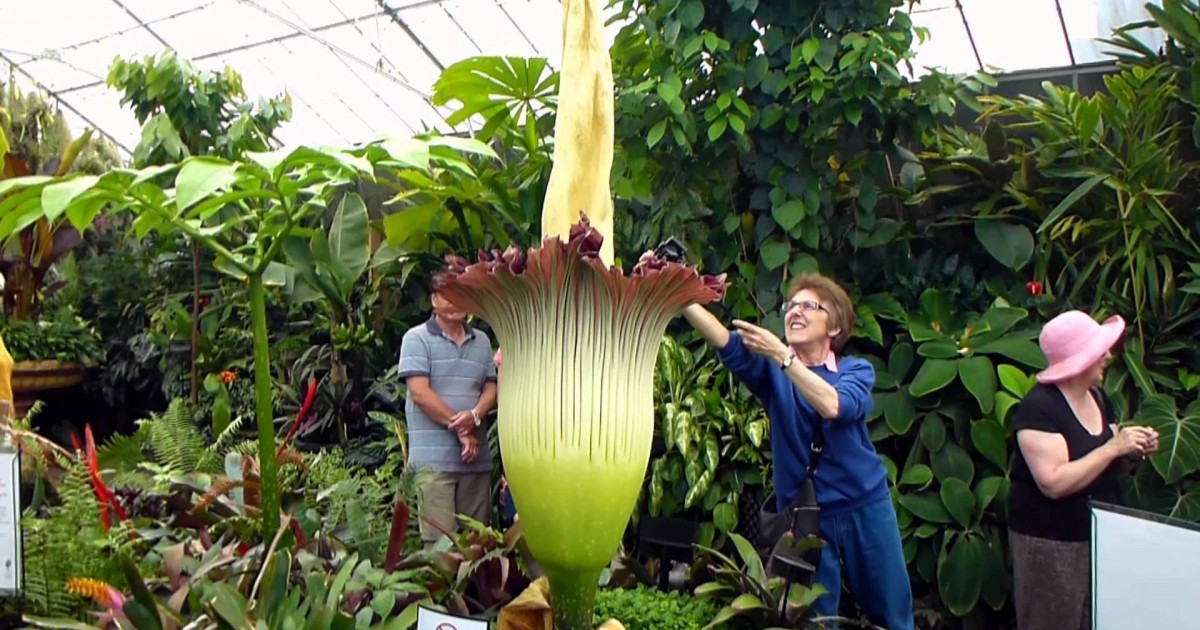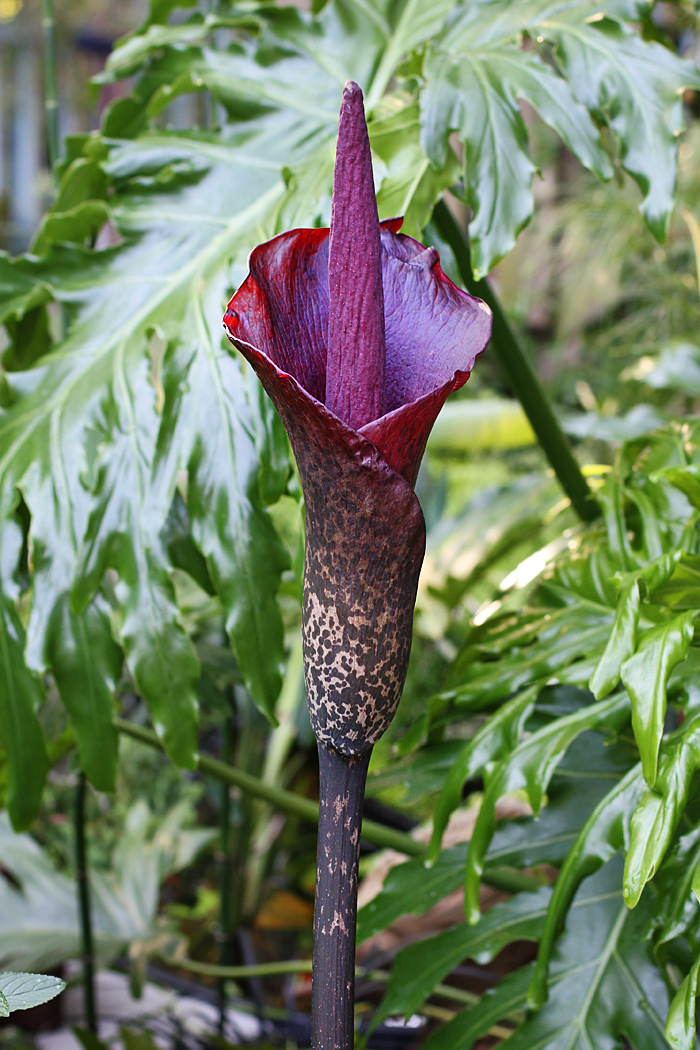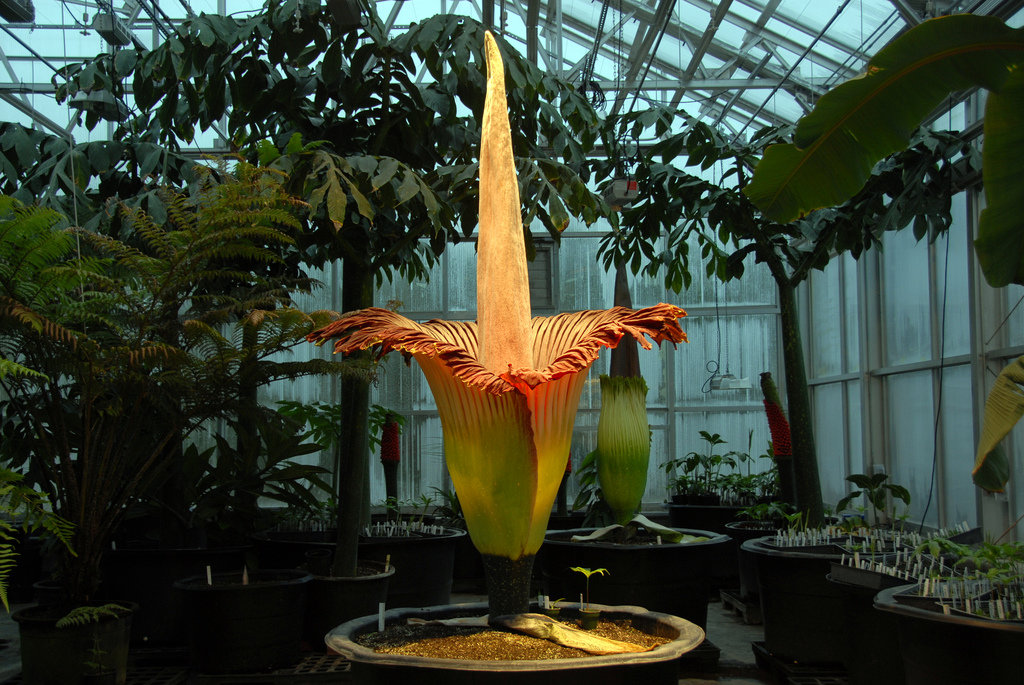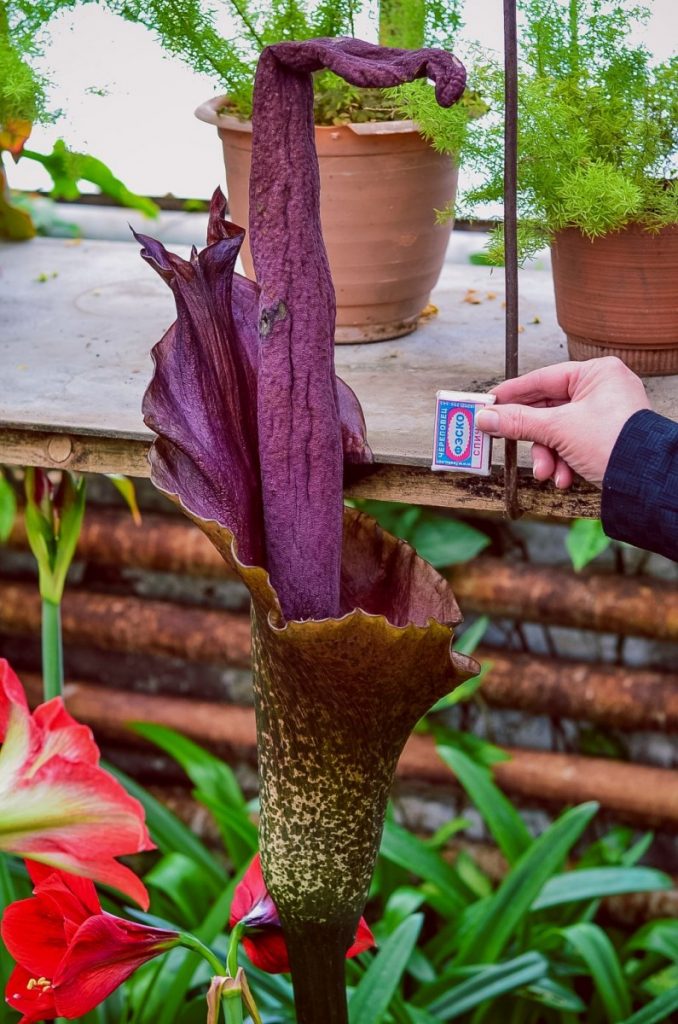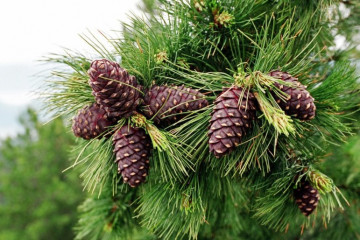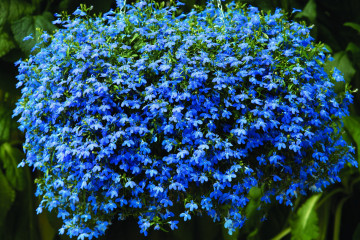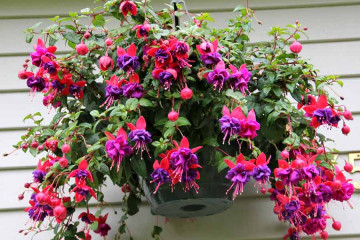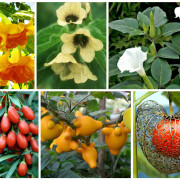How to grow amorphophallus - a flower at home
Content:
Amorphophallus is one of the most interesting and unusual colors. In its natural habitat, it is called a cadaveric flower. He has certain varieties that are grown in artificial conditions.
From the history of appearance
It is not known for certain who first came up with the idea of breeding the largest flower in the world, amorphophallus, as an indoor flower. Today, many amateurs grow it in artificial conditions. Many are scared off by the stench that this unique plant exudes.
It should be noted that the unpleasant smell appears only when you touch the flower.
What does it look like
There are few people who dare to plant an amorphophallus flower in their home. This is probably due to the fact that few people are attracted by the "aroma" of decaying flesh in living quarters. Because of the smell, amorphophallus is rarely grown as a houseplant.
The flower belongs to the Aroid family, although many mistakenly believe that it is a special type of lily.
The name of the flower is translated as "shapeless offspring." He also has one more name - a snake palm or a snake tree. It got its flower due to the similarity of its trunk with the skin of a reptile.
At the same time, the flower is not quite a flower, but a single petal of the original shape, which is covered with numerous specks. It surrounds the ear, the shape of which can vary significantly depending on the particular plant variety.
Common types
The giant flower has many varieties. The main ones include the following.
Amorphophallus titanic
Amorphophallus titanum (amorphophallus titanum) is a fairly tall and very large flower. Its tuber, which looks a bit like a potato, can reach 20 kg by weight. The ear of this plant species can grow up to two meters in height and has a burgundy fleshy inflorescence.
Among flower growers, amorphophallus Titanium is a fairly common species, but keeping it at home will not work because the plant is too large.
Amorphophallus Cognac
The flower amorphophallus konjac is otherwise called amorphophallus pion-leaved. It has a relatively modest size, flattened tubers. The latter are about 20 cm in diameter. The length of the peduncle is about 60 cm, the cob is 50 cm. The inflorescence has a violet-burgundy hue.
Amorphophallus bulbiferous
Bulbous, or bulbous amorphophallus is most suitable for the role of a houseplant, since it is particularly compact in size. The adult flower continues to grow to only half a meter in length. This species is characterized by a pale pink color and an inflorescence not higher than 30 cm in height.
Amorphophallus Rivera
Another variety that can be grown as a home plant is Rivera. It grows up to 1 meter. But this amorphophallus flower blooms much more often when planted at home. Truth never bears fruit.
Care features
Like any other plant, the indoor snake tree requires some care.
Temperature
In the summer, the flower will feel great at room temperature. In winter, it is recommended to keep the plant cool from +10 to +13 degrees.
Lighting
The world's largest flower, amorphophallus, needs good lighting. Light must be diffused without fail.
Watering
During the period of intensive growth, amorphophallus requires quite abundant watering. In this case, do not allow water to enter the tubers. After the leaves begin to turn yellow and die off, the number of watering needs to be reduced.
Spraying
The plant requires periodic spraying. It should be performed at least once a week.
Humidity
Amorphophallus is hygrophilous. When growing a plant, this factor must be taken into account without fail. Low humidity is the main reason a crop may stop blooming.
Priming
The soil for planting should be neutral or have a weak alkaline reaction. You can prepare the soil mixture yourself from the following components:
- sand;
- peat;
- leaf land:
- sod land;
- humus.
In addition to the above, it is recommended to add a small amount of pieces of pine bark or charcoal.
Top dressing
You should start feeding the flower only after the leaves have fully opened. If you do this earlier, fertilization simply will not work - the flower simply will not absorb nutrients. Formulations with a high phosphorus content are suitable for feeding. The application of mineral fertilizers should be alternated with organic ones.
When and how it blooms
Amorphophallus is an amazing plant that is especially prized for its flowers.
Types of flowers
The flowers of the snake palm are monoecious, without a perianth. They are divided into male and female.
Flower shape
The inflorescence has an oval or elongated (depending on the variety) ear and cover. The latter is either falling or non-falling, divided into a tube and a plate. The tube is cylindrical or bell-shaped, smooth inside or corrugated. The cover plate can also look different, depending on the specific plant variety taken.
Flowering period
A complete description of the culture will not be complete if you do not tell about the period of its flowering.
At home, amorphophallus blooms for one to two months in the summer with an interval of three years. The flower remains open for a week. Flowering takes a lot of energy from the plant. After its completion, even its underground tubers are significantly reduced in size.
Changes in flowering care
Caring for a palm tree during the flowering period is the same as on other days. Don't touch this amazing flower. Otherwise, the very next moment you will have to cry because of the intolerable stench. The structure of the flower is such that touching it causes an instant increase in the temperature of the plant up to +40 degrees. It is the temperature that leads to a serious increase in odor.
Breeding features
Reproduction of amorphophallus is possible in various ways.
Germinating seeds
Palm trees are rarely grown from seeds, since this is a very laborious and long-lasting process. And the plant will be able to bloom no earlier than in five years. If such a desire still arises, a step-by-step recipe for germinating seeds will look something like this:
- Soak the seeds for a couple of days.
- Mix garden soil, peat and vermiculite.
- Place the seeds in the soil mixture to a depth of 7 to 12 mm.
- Place the container with seeds in a warm and well-lit place.
Seedlings can be expected on average in ten days, in another week the seedlings will give the first leaf.
You should not rush to transplant the sprouted sprouts into separate containers, many of them will die as they grow.
Rooting cuttings
The plant is not propagated by rooting cuttings.
Dividing the bulb
An adult bulb, on which there are several buds, is divided into parts. The procedure should be performed in early spring, after small shoots appear on the buds. The incisions must be done very carefully to avoid kidney damage. Places of cuts must be treated with crushed charcoal, the tubers themselves should be dried a little in the air. After about a day, the planting material can be placed in the ground.
Growing problems
As with growing any other plant, certain difficulties can arise when caring for amorphophallus.
Diseases
The plant is resistant to almost all known diseases. The only problem that can arise is bulb rot. Usually it is provoked by excessive watering.
Pests
Pests are also not able to cause significant damage to the palm tree. Only occasionally a spider mite or aphid can appear on young leaves, which will not be difficult to get rid of with the help of insecticides.
Other problems
Another problem that can be faced with growing this amazing palm is drying out the leaves. This usually indicates a lack of watering or light.
Interesting Facts
- Amorphophallus is sometimes called the Voodoo lily.
- Because of the intolerable smell, people actively destroy the plant in wildlife if it grows near their homes.
- When grown at home during the flowering period, the palm is often taken outside. It is not possible to be in the same room with her.
